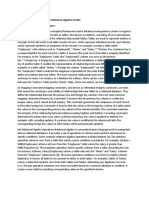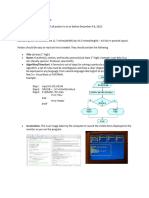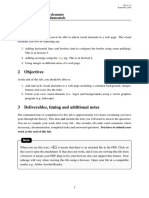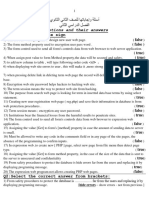0% found this document useful (0 votes)
8 views9 pagesDBMS Module 2 03
The document outlines informal design guidelines for relation schema design, emphasizing clear semantics of attributes, avoidance of redundancy, null values, spurious tuples, and the use of functional dependencies. It also defines normalization forms (1NF, 2NF, 3NF) with examples, discusses SQL operations (INSERT, UPDATE, DELETE), and highlights anomalies in databases that lead to redundancy and inconsistency. Additionally, it covers SQL data types, substring pattern matching, update operations, constraint violations, and characteristics that differentiate relations from ordinary tables and files.
Uploaded by
wosurya1Copyright
© © All Rights Reserved
We take content rights seriously. If you suspect this is your content, claim it here.
Available Formats
Download as PDF, TXT or read online on Scribd
0% found this document useful (0 votes)
8 views9 pagesDBMS Module 2 03
The document outlines informal design guidelines for relation schema design, emphasizing clear semantics of attributes, avoidance of redundancy, null values, spurious tuples, and the use of functional dependencies. It also defines normalization forms (1NF, 2NF, 3NF) with examples, discusses SQL operations (INSERT, UPDATE, DELETE), and highlights anomalies in databases that lead to redundancy and inconsistency. Additionally, it covers SQL data types, substring pattern matching, update operations, constraint violations, and characteristics that differentiate relations from ordinary tables and files.
Uploaded by
wosurya1Copyright
© © All Rights Reserved
We take content rights seriously. If you suspect this is your content, claim it here.
Available Formats
Download as PDF, TXT or read online on Scribd
/ 9





















































































